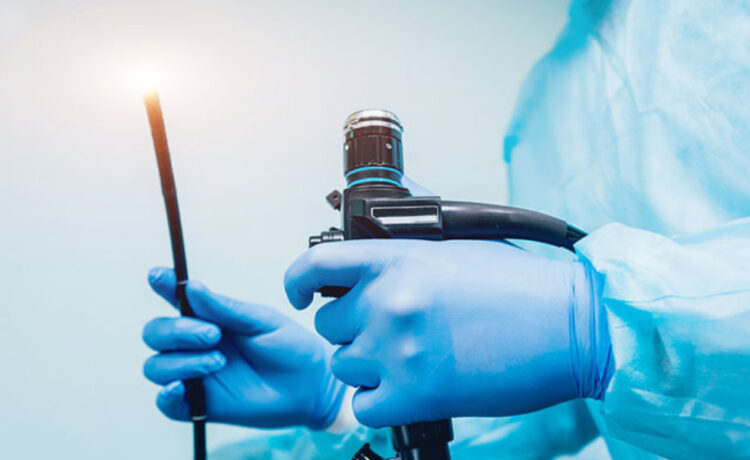When it comes to diagnosing digestive issues, two common procedures often recommended by doctors are gastroscopy and colonoscopy. While both involve the use of a flexible tube with a camera to examine parts of the gastrointestinal (GI) tract, they serve very different purposes and focus on different areas. Understanding how they differ can help ease any anxiety you may feel about these procedures and ensure that you are well-prepared for what each entails.
What Is a Gastroscopy?
A gastrointestinal endoscopy, also known as an upper endoscopy, is a medical procedure used to examine the upper part of the digestive tract. This includes the esophagus, stomach, and the beginning of the small intestine (duodenum). It is commonly recommended for individuals experiencing symptoms like persistent heartburn, difficulty swallowing, unexplained nausea, vomiting, or upper abdominal pain.
During a gastric endoscopy, a thin, flexible tube with a camera at the end (called an endoscope) is gently inserted through the mouth and guided down the throat. The procedure allows doctors to directly observe the lining of the upper GI tract and, if necessary, take tissue samples or perform treatments such as stopping bleeding or removing small growths.
The keyword “gastroscopy” is often associated with the early detection of ulcers, gastritis, esophageal inflammation, and even early signs of stomach cancer. Since it involves the upper part of the digestive tract, it is not suitable for diagnosing issues in the colon or rectum.
What Is a Colonoscopy?
In contrast, a colonoscopy is a procedure designed to examine the lower part of the digestive tract, specifically the large intestine (colon) and rectum. It is most commonly used for colorectal cancer screening, especially in individuals aged 50 and above or those with a family history of colorectal conditions. It can also diagnose causes of rectal bleeding, chronic diarrhea, unexplained weight loss, or persistent changes in bowel habits.
During a colonoscopy, a flexible tube called a colonoscope is inserted through the anus and gently advanced through the colon. This allows doctors to view the entire colon and rectum, remove polyps, take biopsies, and even treat bleeding.
Unlike a gastroscopy, colonoscopy requires a thorough bowel preparation a day before the procedure to ensure the colon is clean and visible. Sedation is typically used for comfort, and patients usually recover quickly.
Key Differences Between Gastroscopy and Colonoscopy
One major difference between the two procedures is the area of the digestive tract they are designed to examine. A gastroscopy looks at the upper GI tract, while a colonoscopy is used for the lower GI tract. Because of this, the symptoms leading to each test are also quite different.
Upper GI symptoms like acid reflux, indigestion, and upper abdominal pain point toward gastroscopy, while issues like blood in stools, changes in bowel habits, or lower abdominal pain usually lead to a colonoscopy referral.
Another difference is the preparation involved. Gastroscopy requires fasting for several hours before the procedure, but usually no other preparation. Colonoscopy, on the other hand, requires a strict bowel cleansing regimen the day before to ensure visibility.
Recovery time also varies slightly. Gastroscopy is usually a quick outpatient procedure with minimal recovery. Colonoscopy may require a bit more time for recovery due to the use of sedation and the more extensive nature of the procedure.
When Are They Ordered Together?
In some cases, doctors may recommend both a gastroscopy and colonoscopy during the same visit, especially if a patient is experiencing symptoms that could involve both the upper and lower digestive tracts. Performing both procedures at the same time can save time, reduce the need for multiple sedations, and provide a comprehensive view of the digestive system.
This combined approach is commonly used when patients have iron-deficiency anemia with no clear source of bleeding, or when there is a need to rule out both upper and lower GI causes of ongoing digestive complaints.
Risks and Safety Considerations
Both procedures are generally safe and well-tolerated. Complications are rare but can include bleeding, especially if biopsies or polyp removal are performed, and perforation of the GI tract wall, which is extremely uncommon. Sedation-related risks are also minimal, particularly when administered by trained professionals.
Patients should always inform their doctor of any underlying medical conditions, allergies, or medications they are taking before undergoing either procedure. Following post-procedure instructions carefully ensures a smooth recovery and accurate results.
Conclusion
Gastroscopy and colonoscopy are valuable diagnostic tools that serve different roles in the investigation of gastrointestinal symptoms. A gastroscopy focuses on the upper digestive tract, while a colonoscopy is designed to examine the lower tract. Both procedures are minimally invasive and highly effective in diagnosing a wide range of conditions. If your doctor recommends one or both, understanding their purpose and differences will help you approach them with confidence and clarity. Early detection of gastrointestinal issues can lead to better treatment outcomes and improved long-term health.

